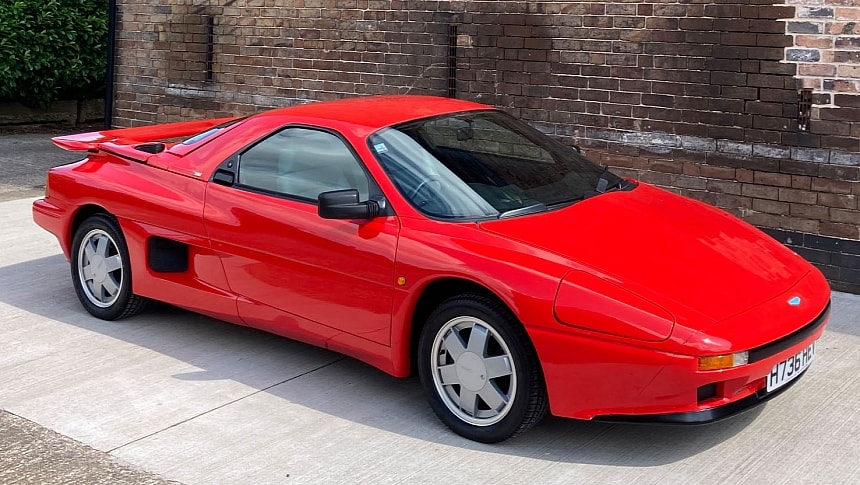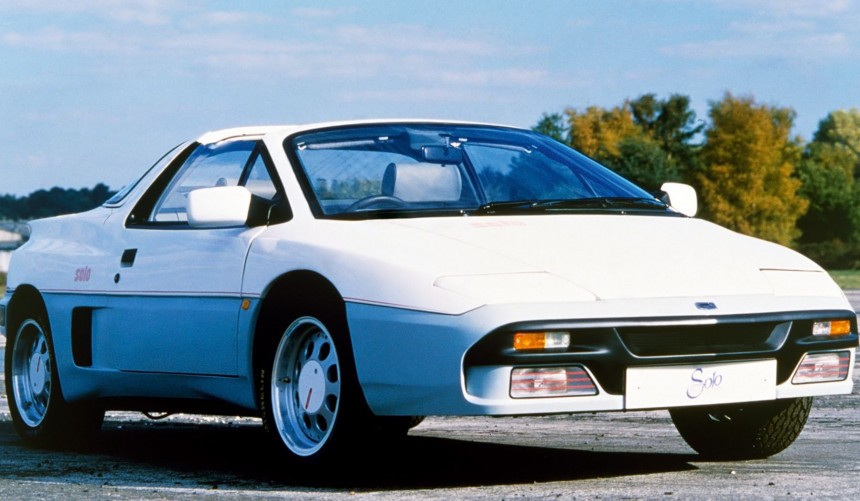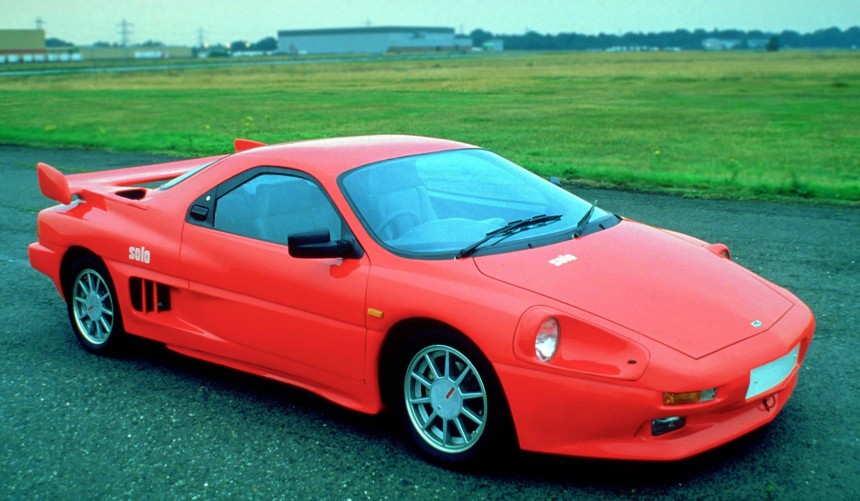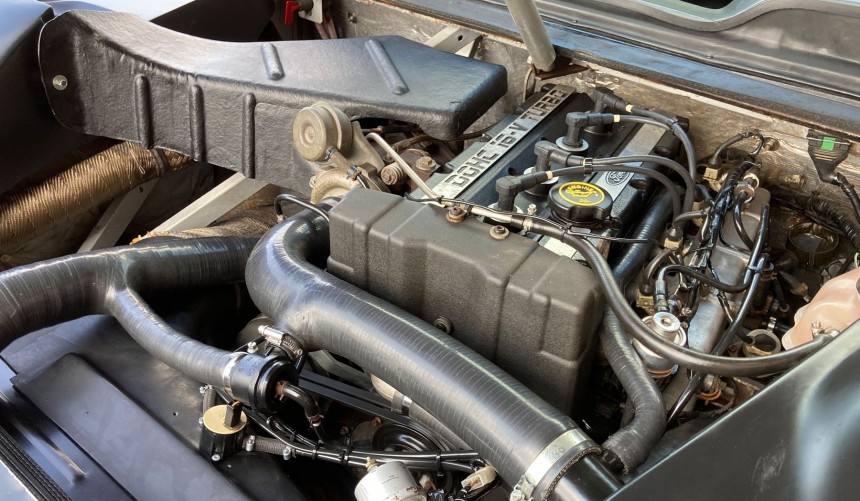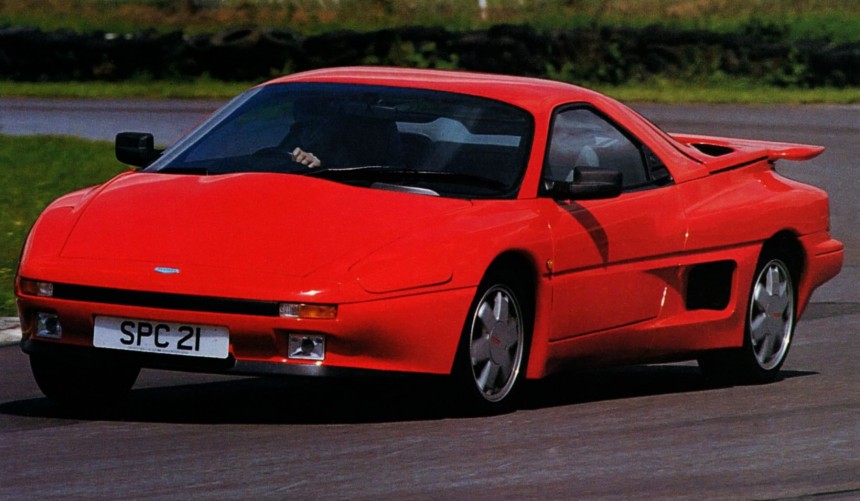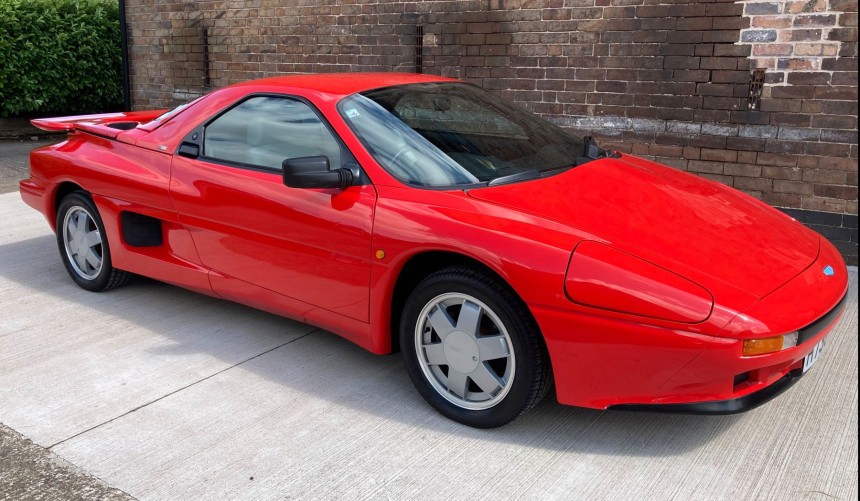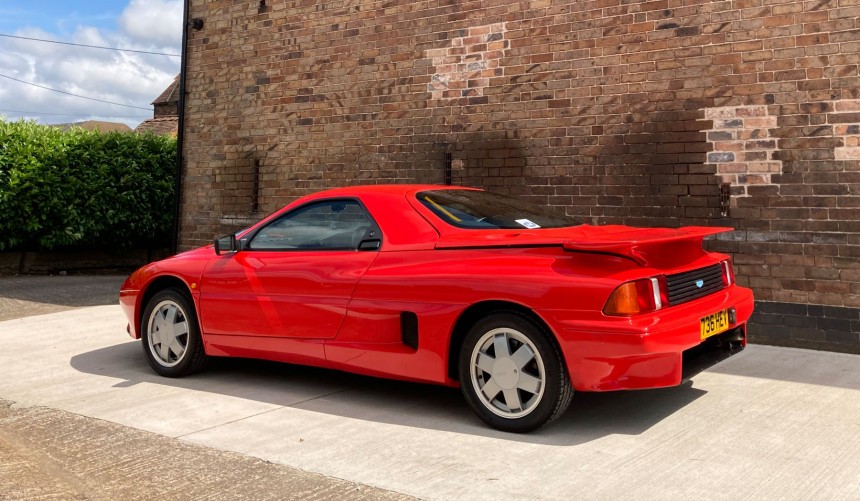About five years before the legendary McLaren F1, another intriguing mid-engine machine was born in England with the promise of kickstarting a revolution in the sports car market.
When discussing England's most prestigious sports car manufacturers, enthusiasts often mention Lotus, Jaguar, Aston Martin, McLaren, or even Jensen, but Panther.
However, South Korean magnate Young Chull Kim aimed to change that when he took over the company officially dubbed Panther Westwinds in 1980.
Established in 1972 by former fashion designer Robert Jankel, the company started by producing lavish, retro-inspired cars that catered to a small portion of the market. However, despite their excellent build quality and luxurious features, these models never racked in serious profits.
Therefore, Panther was on a sure path towards bankruptcy until Young Chull Kim took over and decided to build an exciting, all-around modern mid-engine sports car.
While the company continued developing its retro-inspired models, the all-new Panther was set to break with tradition and offer a modern look mixed with uncomplicated mechanics.
Powered by a 105-hp, 1.6-liter Ford inline-four mounted in the middle of a chassis that borrowed several components from the Blue Oval's entry-level European cars, the Solo was set to become the first affordable mid-engine sports car to enter production.
Initially a two-seater with a fiberglass body, the new Panther showed a lot of promise in the prototype stage and caused quite a stir when it was revealed at the 1984 British Motor Show, held in Birmingham.
However, by the time a production version was ready, Toyota had launched its groundbreaking MR2, which was sensibly cheaper and arguably better in many ways, so Panther was forced to pull the plug on the initial Solo's scheduled production run.
Nevertheless, Young Chull Kim didn't give up on his initial vision, and rather than abandoning the Solo project, he decided to redesign the initial prototype.
While the owner was pragmatic enough to realize that the Solo wouldn't be able to compete with the MR2 in the affordable, compact sports car segment, he figured that a thoroughly improved, high-tech 2+2 GT-style version would fare better against the era's more expensive, mid-range sports cars.
Therefore, the car was redesigned from the ground up, and the all-new Panther Solo 2 was born.
Improved styling and aerodynamics
Four inches (101.6 mm) longer than the initial Solo due to the addition of two small rear seats, the second iteration was unveiled at the 1987 Frankfurt Motor Show.
Envisioned as a four-seat alternative to the Lotus Esprit, the Solo 2 retained the fiberglass body construction pioneered on the first Solo, but the styling was thoroughly modernized, and the panels were reinforced with a Kevlar/carbon composite - an advanced technique at the time.
The most drastic changes were made to the front end, which featured swiveling headlights, while the addition of an ample rear wing improved the mid-engine machine's drag coefficient to 0.33, which made it one of the most aerodynamically efficient sports cars in its class.
Though it resembled the initial Solo, the second version was built around an all-new chassis comprising an aluminum monocoque center section and a tubular spaceframe that supported the powertrain.
Unlike its RWD predecessor, the Solo 2 received a modified Ferguson four-wheel-drive system borrowed from the Ford Sierra XR4x4.
While the new drivetrain increased the overall weight, Panther engineers decided to give the Solo 2 more power by ditching the plebian 1.6-liter Ford inline-four for a new engine that was twice as powerful.
The unit chosen was a Cosworth-engineered turbocharged 2.0-liter initially developed for the iconic Sierra RS Cosworth.
Mounted in the middle of the chassis and mated to the Sierra RS' Borg Warner T5 gearbox, the engine was rated at 204 hp and 198 lb-ft (268 Nm) of torque.
But, while the Solo 2's new powerplant was twice as powerful as the Solo 1's, the beefy and rather outdated 4WD system added too much weight to drastically improve performance.
According to the manufacturer, the Solo was capable of sprinting to 60 mph (97 kph) from a standstill in 7 seconds and reaching a top speed of 142 mph (228 kph) - figures that weren't particularly impressive.
For comparison, a Lotus Esprit Turbo was around 1.5 seconds quicker from 0 to 60 mph, thanks to 11 additional horses and the lack of a heavy 4WD system.
But despite its modest performance, the Solo 2 was reportedly a thrill to drive.
Thanks to great aerodynamics, a near-perfect weight distribution, and a simple yet brilliantly set up suspension system, the mid-engine Panther was one of the best-handling sports cars on the market at the time of its release, according to multiple automotive publications.
Set to become the world's first 4WD mid-engine sports car to enter production, the Solo 2 showed a lot of promise in its early stages, and many experts saw it as a future sports car icon.
However, the development of the production version was hampered by internal turmoil within the Panter ranks.
By late 1987, a cash-strapped Kim was forced to sell 80% of the company to Dong-A-Motor (a subsidiary of SsangYong). Shortly after that, the new owners moved the assembly of the Solo 2 to a much smaller plant located about 65 miles (105 km) away from the old Brooklands facility.
Apart from the logistic issues that arose from the move to a smaller facility, the Solo 2's assembly was delayed by a portion of the staff who decided to quit because they were forced to spend several extra hours commuting.
Nevertheless, the issues were finally patched up about a year later, and by late 1989, the first production cars were completed.
However, by the time the few customers who didn't cancel their orders received a Solo 2, nearly three years had passed since the model was unveiled at the Frankfurt Motor Show.
When it finally hit the streets, the Solo 2 was already outdated. To make matters worse, the initial price tag announced in 1987 went up by around 30%, so the mid-engine Panther was now more expensive than some of the upper-range sports cars, such as the Esprit Tubo.
Praised for its built quality and handling, the world's first mid-engine 4WD sports car was ultimately a huge failure.
Production was stopped in early 1991 due to low demand. Though official records have not survived, it is estimated that only 12 to 24 Solo 2s were built during the short production run.
Today, the Panther Solo 2 is all but forgotten. But, despite its ill-fated story, it remains a fascinating British sports car that could've become iconic with better management and further development.
For an in-depth look at what is now one of the rarest sports cars of its era, we recommend watching the YouTube video below by DtRockstar1.
However, South Korean magnate Young Chull Kim aimed to change that when he took over the company officially dubbed Panther Westwinds in 1980.
Established in 1972 by former fashion designer Robert Jankel, the company started by producing lavish, retro-inspired cars that catered to a small portion of the market. However, despite their excellent build quality and luxurious features, these models never racked in serious profits.
Therefore, Panther was on a sure path towards bankruptcy until Young Chull Kim took over and decided to build an exciting, all-around modern mid-engine sports car.
The first Solo
Powered by a 105-hp, 1.6-liter Ford inline-four mounted in the middle of a chassis that borrowed several components from the Blue Oval's entry-level European cars, the Solo was set to become the first affordable mid-engine sports car to enter production.
Initially a two-seater with a fiberglass body, the new Panther showed a lot of promise in the prototype stage and caused quite a stir when it was revealed at the 1984 British Motor Show, held in Birmingham.
However, by the time a production version was ready, Toyota had launched its groundbreaking MR2, which was sensibly cheaper and arguably better in many ways, so Panther was forced to pull the plug on the initial Solo's scheduled production run.
Change of plans
While the owner was pragmatic enough to realize that the Solo wouldn't be able to compete with the MR2 in the affordable, compact sports car segment, he figured that a thoroughly improved, high-tech 2+2 GT-style version would fare better against the era's more expensive, mid-range sports cars.
Therefore, the car was redesigned from the ground up, and the all-new Panther Solo 2 was born.
Improved styling and aerodynamics
Four inches (101.6 mm) longer than the initial Solo due to the addition of two small rear seats, the second iteration was unveiled at the 1987 Frankfurt Motor Show.
Envisioned as a four-seat alternative to the Lotus Esprit, the Solo 2 retained the fiberglass body construction pioneered on the first Solo, but the styling was thoroughly modernized, and the panels were reinforced with a Kevlar/carbon composite - an advanced technique at the time.
The most drastic changes were made to the front end, which featured swiveling headlights, while the addition of an ample rear wing improved the mid-engine machine's drag coefficient to 0.33, which made it one of the most aerodynamically efficient sports cars in its class.
Four-wheel drive and Cosworth power
Unlike its RWD predecessor, the Solo 2 received a modified Ferguson four-wheel-drive system borrowed from the Ford Sierra XR4x4.
While the new drivetrain increased the overall weight, Panther engineers decided to give the Solo 2 more power by ditching the plebian 1.6-liter Ford inline-four for a new engine that was twice as powerful.
The unit chosen was a Cosworth-engineered turbocharged 2.0-liter initially developed for the iconic Sierra RS Cosworth.
Mounted in the middle of the chassis and mated to the Sierra RS' Borg Warner T5 gearbox, the engine was rated at 204 hp and 198 lb-ft (268 Nm) of torque.
Modest performance yet thrilling handling
According to the manufacturer, the Solo was capable of sprinting to 60 mph (97 kph) from a standstill in 7 seconds and reaching a top speed of 142 mph (228 kph) - figures that weren't particularly impressive.
For comparison, a Lotus Esprit Turbo was around 1.5 seconds quicker from 0 to 60 mph, thanks to 11 additional horses and the lack of a heavy 4WD system.
But despite its modest performance, the Solo 2 was reportedly a thrill to drive.
Thanks to great aerodynamics, a near-perfect weight distribution, and a simple yet brilliantly set up suspension system, the mid-engine Panther was one of the best-handling sports cars on the market at the time of its release, according to multiple automotive publications.
A promising sports car killed off by poor management
However, the development of the production version was hampered by internal turmoil within the Panter ranks.
By late 1987, a cash-strapped Kim was forced to sell 80% of the company to Dong-A-Motor (a subsidiary of SsangYong). Shortly after that, the new owners moved the assembly of the Solo 2 to a much smaller plant located about 65 miles (105 km) away from the old Brooklands facility.
Apart from the logistic issues that arose from the move to a smaller facility, the Solo 2's assembly was delayed by a portion of the staff who decided to quit because they were forced to spend several extra hours commuting.
Nevertheless, the issues were finally patched up about a year later, and by late 1989, the first production cars were completed.
Too little, too late
When it finally hit the streets, the Solo 2 was already outdated. To make matters worse, the initial price tag announced in 1987 went up by around 30%, so the mid-engine Panther was now more expensive than some of the upper-range sports cars, such as the Esprit Tubo.
Praised for its built quality and handling, the world's first mid-engine 4WD sports car was ultimately a huge failure.
Production was stopped in early 1991 due to low demand. Though official records have not survived, it is estimated that only 12 to 24 Solo 2s were built during the short production run.
Today, the Panther Solo 2 is all but forgotten. But, despite its ill-fated story, it remains a fascinating British sports car that could've become iconic with better management and further development.
For an in-depth look at what is now one of the rarest sports cars of its era, we recommend watching the YouTube video below by DtRockstar1.
